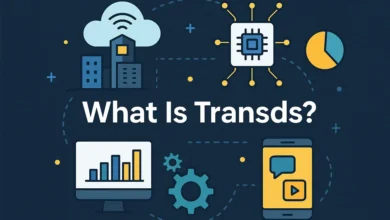Crafting the Future: The Image of Business Embracing Digital Marketing

Introduction: The Image of Business Embracing Digital Marketing
In today’s hyper-connected world, the image of business embracing digital marketing isn’t just a trend—it’s a necessity. The digital landscape is evolving rapidly, and companies that fail to adapt risk being left behind. But what does it mean to embrace digital marketing? Is it just about having a website and a social media presence, or is there more to it?
In this article, we’ll explore how businesses are integrating digital marketing into their operations, the benefits they’re reaping, and the challenges they face. We’ll dive into the strategies that are proving effective and discuss why the image of a business fully embracing digital marketing is becoming synonymous with success. Let’s get into it!
Understanding the Image of Business Embracing Digital Marketing
What Does It Mean to Embrace Digital Marketing?
When we talk about the image of businesses embracing digital marketing, we’re referring to companies that actively and intentionally incorporate digital strategies into their marketing efforts. This isn’t about dabbling in social media or occasionally updating a blog; it’s about a fundamental shift in how a business interacts with its customers and how it presents itself in the market.
- Comprehensive Digital Presence: This includes having an optimized website, active social media profiles, email marketing campaigns, content marketing strategies, and paid advertising.
- Data-Driven Decisions: Embracing digital marketing means making decisions based on analytics and data insights, rather than just gut feelings or traditional methods.
- Customer-Centric Approach: Businesses that truly embrace digital marketing understand that the customer experience is at the center of everything. They focus on delivering personalized, engaging, and seamless experiences across all digital touchpoints.
Why Is This Image So Important?
Why does the image of a business embracing digital marketing matter so much? Well, for one, it signals to customers that a company is modern, forward-thinking, and attentive to their needs. It also indicates that a business is adaptable and capable of thriving in a fast-paced digital world.
In a marketplace where consumer expectations are constantly evolving, staying ahead of the curve isn’t just beneficial—it’s critical. A business that’s seen as out-of-touch with digital trends might be perceived as outdated or less trustworthy.
Key Strategies for Businesses Embracing Digital Marketing
1. Building a Strong Online Presence
The foundation of embracing digital marketing lies in establishing a solid online presence. This involves more than just having a website—it’s about creating a comprehensive digital ecosystem that supports the brand’s goals.
- Website Optimization: A website should be user-friendly, mobile-responsive, and optimized for search engines (SEO). It should load quickly, be easy to navigate, and provide valuable content that answers customer questions.
- Social Media Engagement: Businesses need to be where their customers are, and today, that’s on social media. Engaging with customers on platforms like Facebook, Instagram, LinkedIn, and Twitter helps build brand loyalty and opens up new avenues for customer service.
- Content Marketing: Content is king in digital marketing. Whether it’s through blogs, videos, podcasts, or infographics, providing valuable content helps establish a business as an authority in its industry and drives organic traffic.
2. Leveraging Data and Analytics
Data-driven marketing isn’t just a buzzword—it’s a game-changer. By analyzing customer behavior, preferences, and feedback, businesses can make informed decisions that lead to better outcomes.
- Customer Segmentation: By dividing the customer base into segments based on behaviors, demographics, or preferences, businesses can tailor their marketing efforts to meet the specific needs of each group.
- Performance Metrics: Tracking key performance indicators (KPIs) such as click-through rates, conversion rates, and customer acquisition costs helps businesses understand what’s working and what isn’t.
- A/B Testing: This involves experimenting with different versions of marketing materials (like emails, ads, or landing pages) to see which one performs better. It’s a simple yet powerful way to optimize marketing efforts.
3. Embracing Automation
Automation isn’t about replacing humans with robots—it’s about making processes more efficient so that businesses can focus on what matters most: the customer.
- Email Marketing Automation: Automated email campaigns can nurture leads, welcome new customers, and keep existing ones engaged without requiring constant manual input.
- Social Media Scheduling: Tools like Buffer or Hootsuite allow businesses to plan and schedule posts in advance, ensuring a consistent presence without the daily grind of manual posting.
- Customer Relationship Management (CRM) Systems: CRMs help businesses manage and analyze customer interactions throughout the customer lifecycle, improving relationships and driving growth.
4. Adopting a Mobile-First Approach
With more than half of all web traffic coming from mobile devices, businesses can no longer afford to ignore mobile users. A mobile-first approach ensures that the customer experience is seamless, regardless of the device they’re using.
- Responsive Design: Websites and emails should be designed to look great on any device, from desktops to smartphones.
- Mobile Apps: For businesses with the resources, developing a mobile app can offer a more personalized and engaging experience for customers.
- Mobile Advertising: Paid advertising strategies should include mobile-friendly ads that are optimized for smaller screens and faster load times.
Challenges Businesses Face When Embracing Digital Marketing
1. Keeping Up with Rapid Changes
The digital marketing landscape changes fast—fast. New platforms emerge algorithms get updated, and consumer behaviors shift. For businesses, staying on top of these changes can feel like a never-ending challenge.
2. Balancing Personalization with Privacy
Customers expect personalized experiences, but they also want their data to be protected. Striking the right balance between personalization and privacy can be tricky. Businesses must ensure they’re transparent about how they collect and use data, and they must comply with regulations like GDPR.
3. Measuring ROI
Unlike traditional marketing, where results can be hard to quantify, digital marketing offers a plethora of metrics. But with so much data available, determining which metrics matter and accurately measuring ROI can be overwhelming.
4. Overcoming Internal Resistance
Sometimes, the biggest obstacle to embracing digital marketing isn’t external—it’s internal. Employees and stakeholders who are used to traditional marketing methods might be resistant to change. Overcoming this resistance requires clear communication, training, and sometimes, a cultural shift within the organization.
The Benefits of Embracing Digital Marketing
Despite the challenges, the benefits of embracing digital marketing far outweigh the drawbacks. Here’s why:
1. Greater Reach
Digital marketing allows businesses to reach a global audience without the limitations of geography. Whether it’s through social media, search engines, or email campaigns, businesses can connect with customers all over the world.
2. Cost-Effective
Compared to traditional advertising methods like TV or print ads, digital marketing is often more cost-effective. Businesses can reach a larger audience for a fraction of the cost, making it an attractive option for small and medium-sized enterprises.
3. Enhanced Customer Engagement
Digital marketing offers numerous opportunities for businesses to engage with their customers. From responding to comments on social media to sending personalized email offers, these interactions help build stronger relationships and foster brand loyalty.
4. Measurable Results
One of the biggest advantages of digital marketing is the ability to track and measure results in real time. Businesses can see exactly how their campaigns are performing, make data-driven decisions, and adjust strategies on the fly.
5. Competitive Advantage
Finally, the image of a business embracing digital marketing often leads to a competitive advantage. Companies that are agile, data-driven, and customer-focused are more likely to thrive in today’s digital economy.
FAQs
Q1: What is the most important aspect of embracing digital marketing?
The most important aspect of embracing digital marketing is adopting a customer-centric approach. Everything revolves around providing a seamless and engaging customer experience across all digital platforms.
Q2: How can small businesses embrace digital marketing on a budget?
Small businesses can start by focusing on cost-effective strategies like social media marketing, content creation, and email campaigns. Leveraging free or low-cost tools for SEO, analytics, and automation can also help stretch a limited budget.
Q3: What are some common mistakes businesses make when transitioning to digital marketing?
Some common mistakes include neglecting mobile optimization, ignoring data and analytics, failing to engage with customers on social media, and not having a clear strategy or goals in place.
Conclusion: Shaping the Future with Digital Marketing
The image of business embracing digital marketing isn’t just a snapshot—it’s a dynamic, evolving picture that reflects the future of commerce. As businesses continue to adapt and innovate, those that fully embrace digital marketing will be the ones leading the charge into the future. By building a strong online presence, leveraging data, embracing automation, and adopting a mobile-first approach, businesses can not only survive in the digital age but thrive.
So, what’s your image of embracing digital marketing? Whether you’re just starting or looking to optimize your current strategy, there’s never been a better time to dive in and make your mark. The future is digital—are you ready to embrace it?



